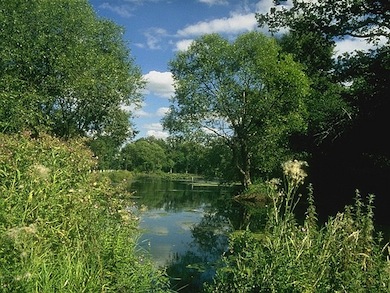This is an attractive wayside common, with scattered trees, overgrown hedgerows and several pockets of scrubby woodland. Its most interesting feature ecologically is a chain of old ponds.
Local Wildlife Site
Accessible Sites of Importance for Nature Conservation
Totteridge Common
Borough: Barnet
Grade: Borough Grade II
Access: Free public access (all/most of site)
Area: 3.67 ha
Description
Wildlife
The scrub and woodland is composed mainly of sycamore and elm, with other trees and shrubs including two young native black poplars near the southern margin. This latter tree is scarce in Britain, and is a priority species in the London Biodiversity Action Plan. There are some fine mature oaks and horse chestnuts and a number of old coppiced hornbeams scattered throughout the common. The grassland is dominated by bents and Yorkshire-fog, with a fairly good range of wild flowers, including burnet saxifrage, common knapweed and oxeye daisy. Damp areas near some of the ponds contain much tufted hair-grass, along with marsh thistle, oval sedge, jointed rush and hedge bedstraw. There are five ponds on the common: Long Pond, Ellern Mede Pond, Pink Cottage Pond, Warren Pond and Burnham's Pond. These vary in character due to size, shading, disturbance and management, but all have interesting wetland plants and are valuable for dragonflies, other insects and amphibians. Long Pond is used for angling, so presumably contains a good population of fish, which may reduce its value for amphibians. Plants to be found at the edges of the ponds and growing out of them include lesser spearwort, trifid bur-marigold, fool's watercress, common and narrow-leaved water-plantains, sharp-flowered rush, marsh woundwort, yellow iris and false fox-sedge. In deeper water, white water-lily, curled and broad-leaved pondweeds, and Canadian and Nuttall's waterweeds can all be found.Facilities
Fishing.
The Long Pond at Totteridge Common © Ian Yarham
Feedback
Have a question or a comment for this site, or notice anything missing or out of date? Please contact us.
